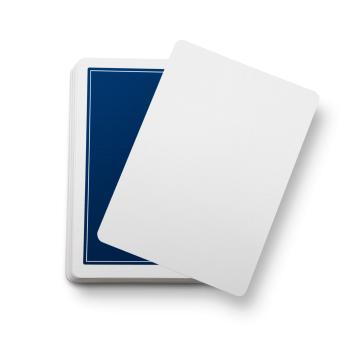Spelling Patterns "Go Fish" Card Game

- Preview |
- Standards |
- Resources & Preparation |
- Instructional Plan |
- Related Resources |
- Comments
Overview
Using a chart with 52 words grouped by spelling patterns, students make a card game designed to help them recognize several common English spelling patterns. Students work in small groups to create the cards, including words and definitions, and then play a game similar to "Go Fish." The object of the game is to collect sets of words that share the same spelling pattern. Class discussion about spelling and a quiz at the end of the lesson help motivate students to learn the words and patterns.
From Theory to Practice
- Accurate spelling occurs because our brains recognize familiar sounds, important letter combinations, and other predictable patterns.
- Teaching related words together helps students make connections between spelling and meaning.
- By the middle grades, students are ready to learn to spell strategically.
Common Core Standards
This resource has been aligned to the Common Core State Standards for states in which they have been adopted. If a state does not appear in the drop-down, CCSS alignments are forthcoming.
State Standards
This lesson has been aligned to standards in the following states. If a state does not appear in the drop-down, standard alignments are not currently available for that state.
NCTE/IRA National Standards for the English Language Arts
- 3. Students apply a wide range of strategies to comprehend, interpret, evaluate, and appreciate texts. They draw on their prior experience, their interactions with other readers and writers, their knowledge of word meaning and of other texts, their word identification strategies, and their understanding of textual features (e.g., sound-letter correspondence, sentence structure, context, graphics).
- 6. Students apply knowledge of language structure, language conventions (e.g., spelling and punctuation), media techniques, figurative language, and genre to create, critique, and discuss print and nonprint texts.
- 12. Students use spoken, written, and visual language to accomplish their own purposes (e.g., for learning, enjoyment, persuasion, and the exchange of information).
Materials and Technology
- A set of 52 small index cards (or card stock cut into card-sized rectangles) for each group of about four students
- Colored pencils
Printouts
Preparation
| 1. | Make a copy for each student of the Spelling "Go Fish" Card Game Instructions, Spelling Patterns Chart, and Spelling Patterns "Go Fish" Self-Evaluation. |
| 2. | Make a seating chart organizing your students into heterogeneous groups of four, with a variety of social and academic skills in each group. Having two boys and two girls in each group, if possible, often works well. |
| 3. | Write the following warm-up activity on the board before class starts.
|
Student Objectives
Students will
- Acquire practical strategies for improving spelling by focusing on patterns of letters that represent certain sounds
- Improve decoding abilities by becoming familiar with spelling patterns and their respective sounds
- Develop cooperative learning skills as they work in small groups to make and play a game
Session 1
| 1. | Have students copy the warm-up activity from the board into their notebooks and fill it out using any resource they want. After a few minutes, ask several students to share their answers. Fill in the chart on the board with their suggestions, and invite students to add new words to their own charts as they hear them. |
| 2. | Conduct a class discussion on the importance of correct spelling.
|
| 3. | Explain that even though spelling can be difficult in English, with the same sounds spelled differently in different words, there are patterns that recur, and that recognizing these patterns can improve spelling skills. Good spellers use strategies that combine memorization and recognizing patterns. |
| 4. | Explain that in the next session students are going to make and play a card game that will help them become aware of spelling patterns. Distribute copies of the Spelling "Go Fish" Card Game Instructions and give students a few minutes to read the instructions. Answer any questions they might have. |
Session 2
| 1. | Distribute copies of the Spelling Patterns Chart and explain that it provides all of the information students need to make the "Go Fish" cards. Note that the words are organized in sets that share a spelling pattern. Go over the patterns and the sets of words for each pattern. Remind students of the rule "i before e except after c," and ask them to identify which sets of words demonstrate this rule. |
| 2. | Explain that part of the grade for the lesson will be based on completion of the activities on the Spelling "Go Fish" Card Game Instructions handout, including how well students work together as a group to make and play the game. Mention that they will also be tested to make sure they have learned both the spelling and meanings of the words. Note: It is suggested that half of the grade for the lesson be based on the group work and the other half on the test given in Session 4. |
| 3. | Assign students to their groups of four according to the prepared seating chart (see Preparation, Step 2). Make sure each group has 52 index cards and a set of colored pencils. |
| 4. | Instruct the groups to divide the words on the Spelling Patterns Chart among the members of the group: One student makes a card for the first word in each group of four, another student for the second word, and so on. Remind them that they need to make one card for each word on the chart, following the instructions on the handout. |
| 5. | If a group finishes their set of cards before the end of the class period, they can begin playing the game. |
Session 3
| 1. | Pick the one or two words from each set on the Spelling Patterns Chart that you think your students are least likely to understand. List these words on the board and make sure students understand their definitions. |
| 2. | Have students play the game in their groups as you observe and intervene when necessary. Groups may play more than one game if time permits. If they have to stop in the middle of a game, whoever has the most points at that moment wins. |
Homework: Instruct students to write an original sentence for each of the words you listed and defined in Step 1 of this session. Tell them that in the next session they will be tested on the spelling and definitions of these words.
Session 4
| 1. | Instruct students to write Spelling Test and their name at the top of a blank sheet of paper. Slowly dictate each of the words they studied for homework. |
| 2. | Ask students to write a definition and an original sentence for each of the words (without looking at their homework or the chart). |
| 3. | For extra credit, students can write another word with the same spelling pattern next to each word. |
| 4. | Distribute copies of the Spelling Patterns "Go Fish" Self-Evaluation and give students time to answer the questions. Then discuss their responses as a class. Also offer your own observations, including something positive about each group. |
Extensions
- Have students play the Spelling Match game at Education Place®, which focuses on different spelling patterns that make the same sounds. See who can get the highest score at the highest level.
- For a few days after the lesson, offer students extra points if they find one of the 52 words on the Spelling Patterns Chart (or other words using the same spelling patterns) in any printed material. Tell them to lightly underline the word in pencil, place the open publication on the edge of their desk, and raise their hand when you ask who has found words from the game. You can then quickly check and record their findings as you have time during class.
- Have students use the Stapleless Book tool to make a book depicting any 8 of the 52 words from the spelling chart. Each page might include a word and its definition, a sentence using the word, and a drawing that illustrates the sentence.
- Invite students to make similar sets of cards using different patterns or words, and share the sets with their classmates.
Student Assessment / Reflections
- Circulate around the classroom as students make and play the card game, providing guidance as needed. Make notes on how groups are working together and if you observe any problems. Use these observations to give constructive feedback during the discussion at the end of Session 4.
- After students have filled out their Spelling Patterns “Go Fish” Self-Evaluation sheets, encourage a rich class discussion so that students reflect on what they learned, how they might use this information to improve their spelling, and how they learned together through a group activity.
- Point out these spelling patterns as they come up in reading selections in subsequent lessons, and observe how quickly individual students, especially struggling readers, are able to decode the words containing these patterns.

Add new comment